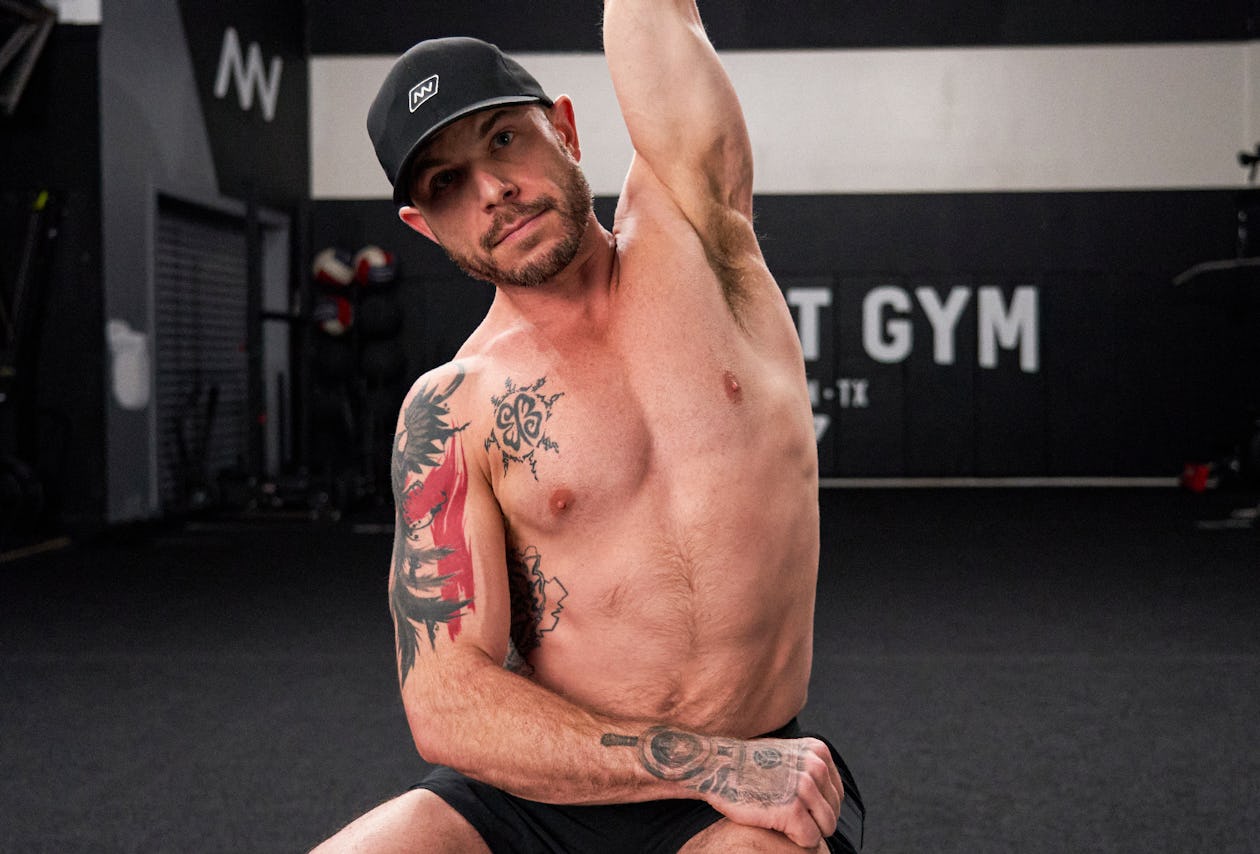Do you have a bad knee or knees? You can become your own physical therapist by using these 5 resistance band knee exercises to help reduce knee pain.
These movements are great for alleviating any knee pain due to a torn meniscus or ligament, jumper’s knee, osteoarthritis, tendonitis, or other common knee ailment.
With the use of resistance bands, perform these knee strengthening exercises to improve the strength of the specific muscles of the knee.
Please note that if you are coming off of an injury, they should only be performed if they do not cause or increase pain.
Begin with these basic resistance band knee strengthening exercises. Once these become too easy, you can increase the resistance band tension.
5 Resistance Band Knee Exercises for Knee Pain

Resistance Band Knee Exercise #1: Terminal Knee Extension

The Terminal Knee Extension (TKE) exercise moves the knee through the end stage of the range of motion, or from a partially bent position as opposed to fully bent. Fix a band to a stationary object and the other end around the back of your knee.
From there you step backwards creating tension in the band and letting your knee translate forward. Now, flex your quad hard and drive your heel downward, straightening your leg.
Resistance Band Knee Exercise #2: Stork Stance TKE

erminal knee extension exercises strengthen the quadriceps muscles in your thighs as well as your shin muscles. The Stork Stance TKE variation exemplifies this even more so than the standard TKE.
Set up exactly how you would for the standard TKE, but this time you will perform the exercise with 1 foot off the ground.
Resistance Band Knee Exercise #3: Lying Knee Extension

The Lying Knee Extension is the first of three ground-based resistance band movements in this series. Begin this exercise lying on your back with a resistance band wrapped around your ankle with your knee to your chest.
Slowly extend your knee, until your leg is fully extended, then return to the start. It should mimic the movement of a hamstring curl.
Resistance Band Knee Exercise #4: Lying Hip Extension

Weak glutes and tight hip flexors cause your pelvis to tilt forward, which may further knee pain. The Lying Hip Extension is an excellent resistance band exercise for increasing the range of motion in the hip flexors, which will reduce knee pain.
Begin this exercise lying on your back with a resistance band wrapped around your ankle with your knee to your chest. Slowly extend your knee until your leg is fully extended, then return to the start.
This is very similar to the lying knee extension, but you are pressing your leg out, not up.
Resistance Band Knee Exercise #5: Lying Glute Extension

The Lying Glute Extension is our primary glute stretch of this resistance band series. Tight glutes can cause tight hamstrings, which can pull against the quads causing knee pain. Begin, by lying faceup on the floor with your left leg bent.
Using a resistance band, pull your left leg as far over your right as your range of motion will allow.




